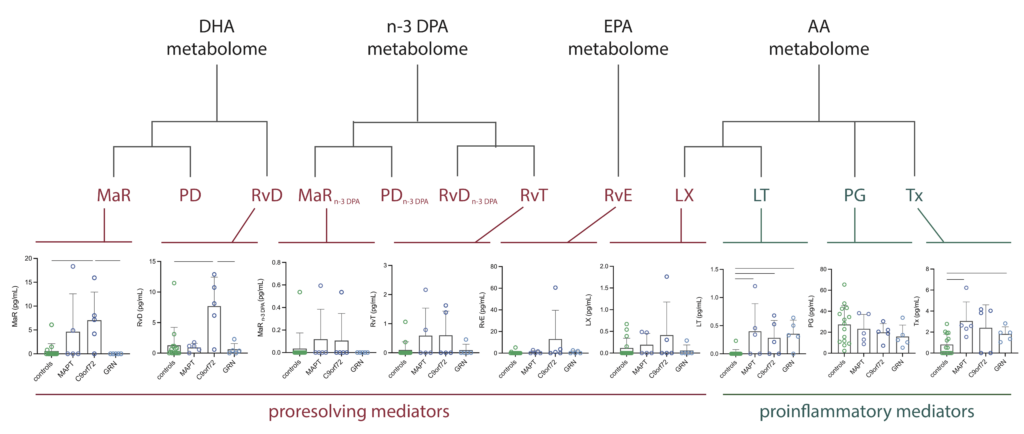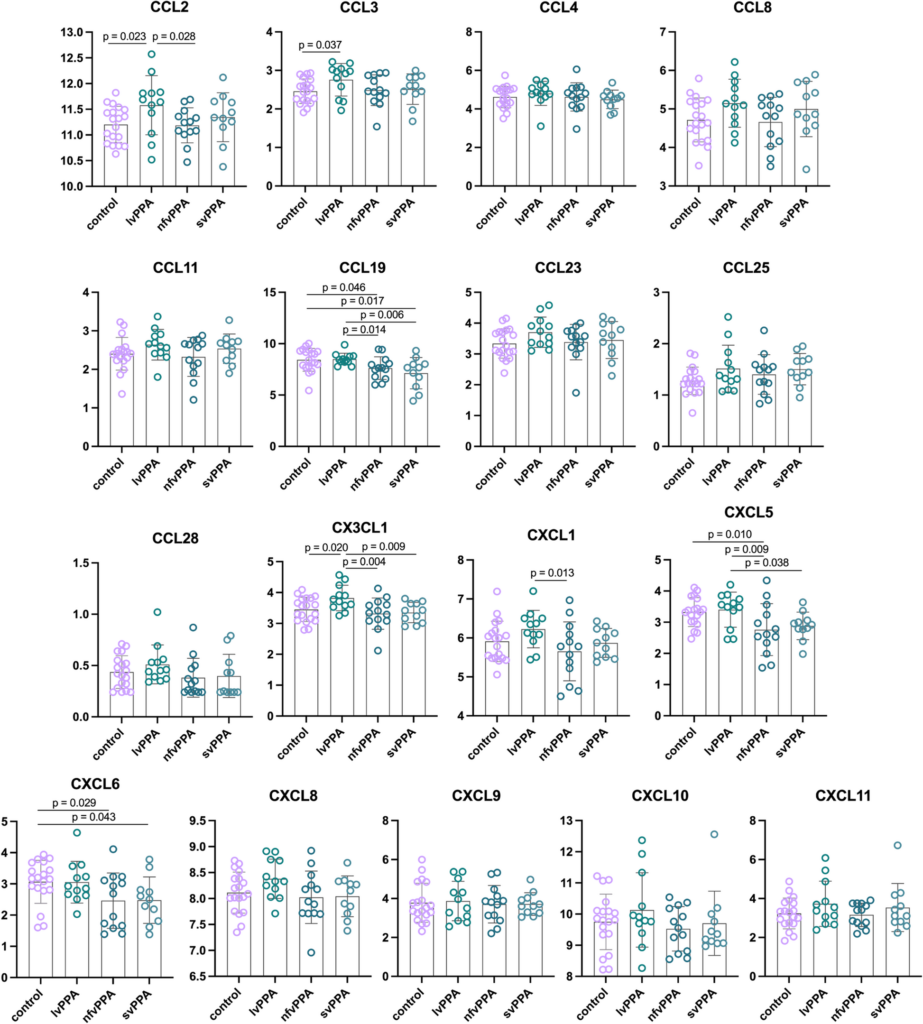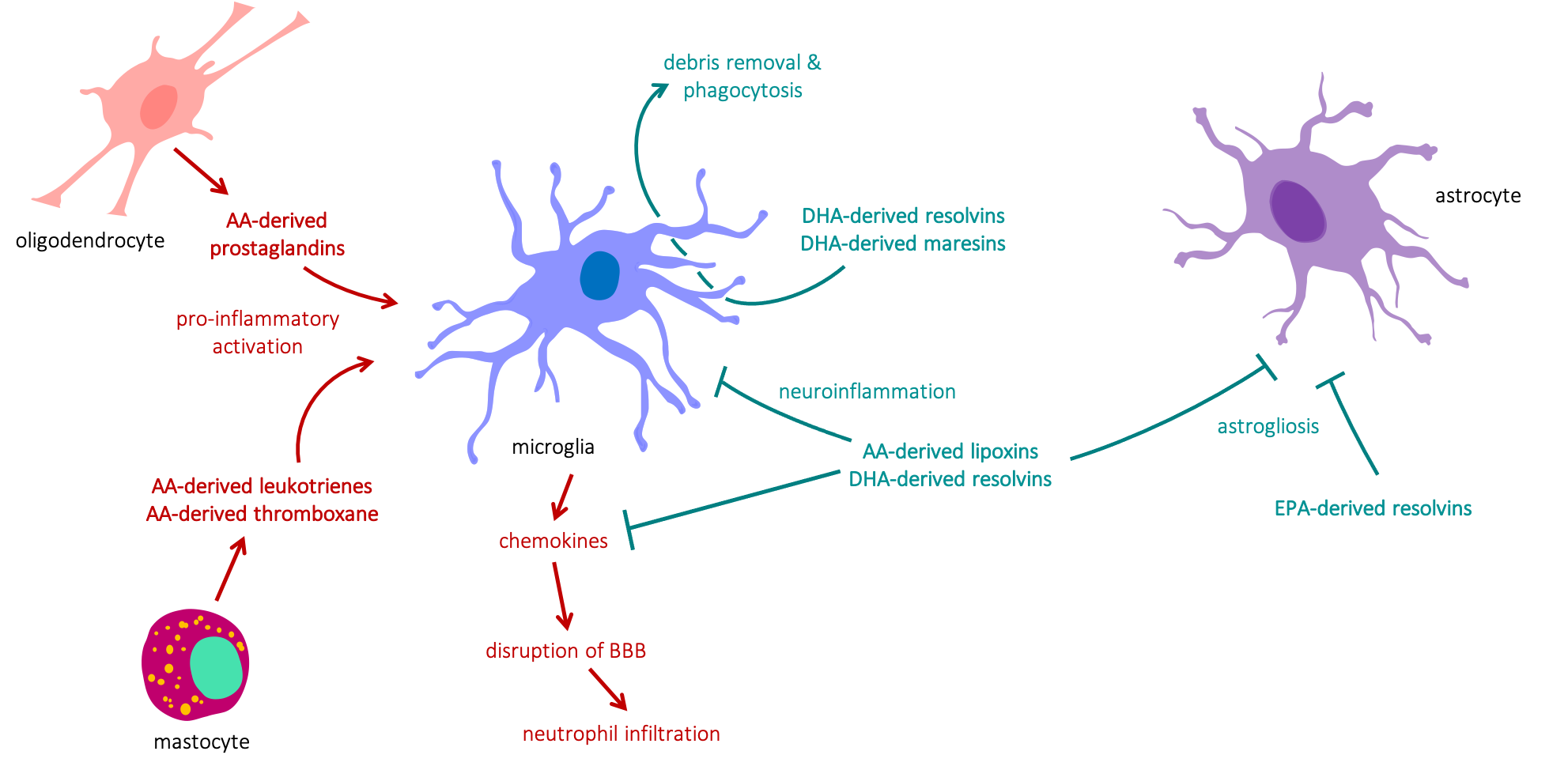Two new papers have been published by our team this month highlighting the role of inflammation in the brain in people with FTD. Both papers have been led by Aitana Sogorb Esteve from our team.
The first paper published in the Journal of Alzheimer’s disease describes the resolution pathway, the way that the brain tries to resolve any inflammation that has happened – see picture above. This pathway involves a set of molecules called lipid mediators which have not been previously studied in FTD. In this pilot study, Aitana showed that these lipid mediators seemed to be particularly affected in people with C9orf72 mutations, suggesting that they resolve inflammation differently to other people.

Some lipid molecules Aitana studied are involved in causing inflammation and these were affected in the other genetic forms of FTD caused by GRN and MAPT mutations. This study adds to our knowledge about inflammation in the brain in these disorders.
In the second paper, published in the Journal of Neuroinflammation, Aitana investigated the role of chemokines, small proteins involved in neuroinflammation, in people with primary progressive aphasia or PPA.
In spinal fluid, there seemed to be a number of different changes in people with the nonfluent and semantic variants of PPA compared to those with the logopenic variant of PPA. This may reflect that logopenic variant PPA is often an atypical variant of Alzheimer’s disease, whilst the other two variants are associated with FTD.

These studies highlight potential ways that new treatments could be developed in the future for FTD, either by decreasing or altering the amount of inflammation happening in the brain.

